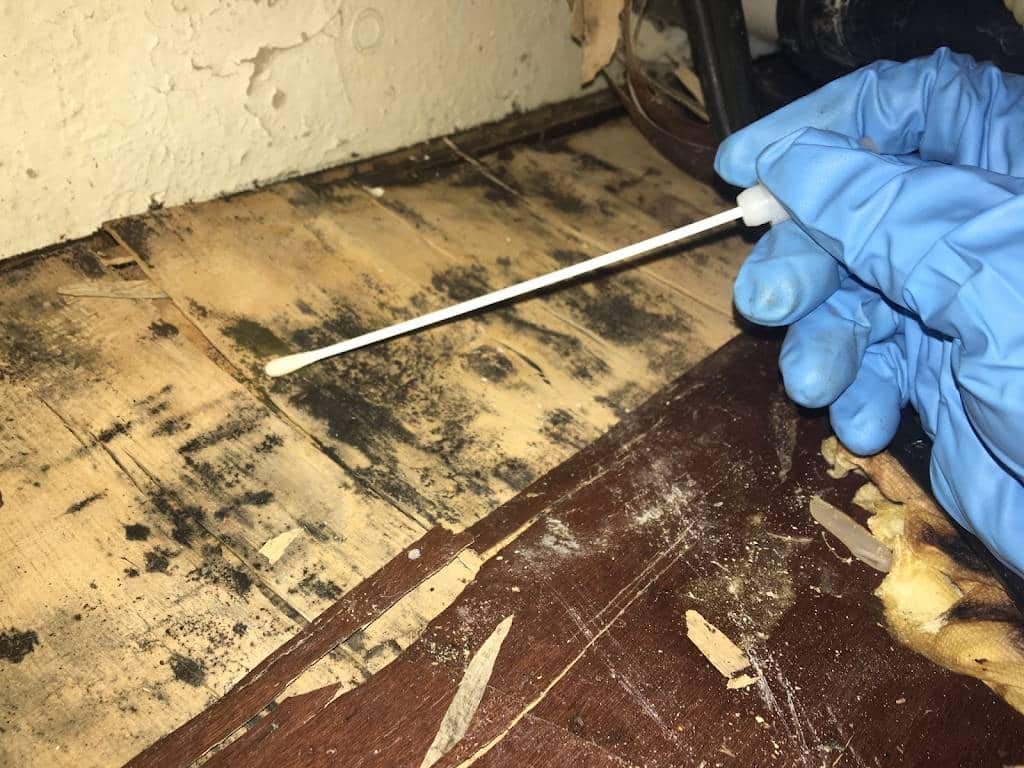Guidance on What to Do After Mold Remediation
Wiki Article
Effective Article Mold And Mildew Removal Solutions for Your Home
Mold and mildew growth in homes can be a persistent issue, commonly needing a systematic approach for effective post-remediation options. From comprehending the elements that contribute to mold and mildew growth to carrying out appropriate cleansing methods and dampness control actions, the procedure can be complex yet critical for keeping a healthy living atmosphere. Post Mold Remediation.Recognizing Mold And Mildew Development Elements
The primary element adding to mold growth is dampness. Mold and mildew spores call for wetness to germinate and grow, making wet or humid environments highly at risk to mold problems.
Furthermore, air flow and light exposure can influence mold development. Locations that lack correct air flow and all-natural light are a lot more vulnerable to mold growth. By attending to these elements comprehensively, individuals can properly reduce mold and mildew development and secure their living atmospheres.
Correct Mold Cleansing Strategies
Utilizing efficient cleansing techniques is essential in stopping the reappearance and attending to of mold and mildew contamination in interior environments. When handling mold and mildew, it is critical to prioritize safety by using protective equipment such as goggles, gloves, and masks. The primary step in correct mold cleaning is to consist of the damaged area to avoid the spread of spores to uncontaminated locations. This can be attained by sealing off the room and utilizing air scrubbers or unfavorable air makers to preserve air high quality.
Executing Dampness Control Measures
To successfully avoid mold growth and contamination in interior environments, implementing wetness control measures is vital. Furthermore, guaranteeing correct ventilation in locations prone to moisture build-up, such as restrooms and kitchen areas, can aid reduce the danger of mold development. By diligently applying these dampness control actions, homeowners can effectively reduce the probability of mold recontamination and preserve a healthy interior setting.Using Natural Removal Solutions
After successfully executing dampness control measures to avoid mold and mildew development in interior environments, house owners can currently discover the effectiveness of natural removal remedies in maintaining a healthy home. All-natural remediation services make use of eco-friendly approaches to deal with mold and mildew and mildew, making them a prominent choice for those looking for non-toxic options. One such service is using vinegar, an all-natural antimicrobial agent, to tidy and disinfect surface areas contaminated by mold. Just dilute vinegar with water and spray it onto the impacted areas, allowing it to sit for a couple of hours prior to wiping clean. Furthermore, tea tree oil, understood for its antifungal properties, can be blended with water and sprayed onto mold-infested surfaces to hinder look at here now additional development. Another natural choice is hydrogen peroxide, which can properly kill mold on numerous surface areas without leaving hazardous residues behind. By including these all-natural remediation services into their cleaning regimens, homeowners can efficiently combat mold growth while advertising a much healthier interior setting on their own and their households.
Preserving a Mold-Free Setting
In order to stop mold and mildew reoccurrence and make certain a consistently mold-free atmosphere, it is crucial for property owners to carry out aggressive maintenance practices. On a regular basis inspecting areas susceptible to mold and mildew development, such as bathrooms, kitchens, attics, and cellars, is vital. Resolving any leaks, water damage, or excess moisture without delay can dramatically lower the danger of mold and mildew advancement. testing air quality after mold remediation. Proper air flow in areas with high moisture levels is additionally key to stop mold development. Using dehumidifiers or exhaust followers can help preserve ideal wetness degrees and inhibit mold spores from thriving.In addition, keeping cleanliness in the home is crucial for mold prevention. Routinely cleaning and cleaning surface areas, rugs, and furniture can aid eliminate mold spores before they have a chance to increase and work out. Making use of mold-resistant products for building and construction materials and home furnishings can further help in developing a mold-free environment. Last but not least, keeping interior plants in check and making certain appropriate water drainage in outside landscape design can reduce moisture accumulation, decreasing the likelihood of mold infestations. By complying with these aggressive maintenance practices, property owners can successfully support a mold-free home.
Verdict
To conclude, it is necessary to address mold and mildew development variables, make use of correct cleaning techniques, carry out moisture control measures, use natural removal solutions, and keep a mold-free atmosphere in order to efficiently deal with blog post mold removal in your house - what to do after mold remediation. By following these approaches, you can prevent mold from reoccuring and click here to read ensure a healthy living setting for you and your family
The main variable contributing to mold growth is wetness. Mold and mildew spores require wetness to sprout and thrive, making damp or damp environments highly vulnerable to mold and mildew invasions.To properly prevent mold growth and contamination in interior settings, implementing moisture control steps is vital. In addition, ensuring proper ventilation in locations prone to moisture accumulation, such as washrooms and kitchen areas, can aid minimize the threat of mold development.After successfully remove mold shower executing dampness control steps to prevent mold and mildew growth in indoor settings, house owners can now check out the effectiveness of natural remediation options in maintaining a healthy living room.
Report this wiki page